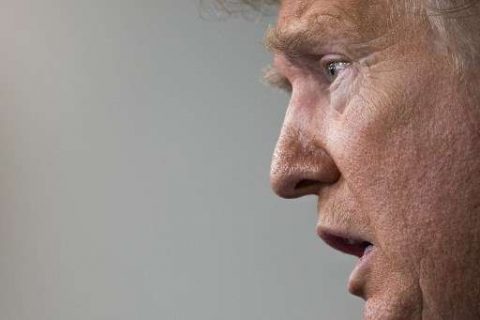
WASHINGTON, DC (AFP) — Top global oil producers are considering slashing output by 20 million barrels a day under the terms of a deal to boost prices, US President Donald Trump said on Monday.
Trump’s tweet came after OPEC producers and their allies agreed on Sunday to cut production by 9.7 million barrels per day, which some analysts feared would not be enough to stem the damage from the combination of plunging demand amid the coronavirus pandemic and a price war between Russia and Saudi Arabia.
“Having been involved in the negotiations, to put it mildly, the number that OPEC+ is looking to cut is 20 Million Barrels a day, not the 10 Million that is generally being reported,” Trump tweeted.
“Thank you to all of those who worked with me on getting this very big business back on track, in particular Russia and Saudi Arabia.”
The US benchmark WTI oil price climbed 1.4 percent in New York after Trump’s tweet to $23.10, while Brent rose 0.9 percent to $31.76.
OPEC members dominated by Saudi Arabia and other producers led by Russia have been negotiating a deal to cut production and support prices for days.
Mexico balked at an agreement on Friday, leading Trump to step in and say the US would help Mexico meet its end of the bargain.
After a Sunday videoconference, the top producers agreed to slash daily production by 9.7 million barrels from May, according to Mexican Energy Minister Rocio Nahle, down from the 10 million barrels a day envisioned earlier.
OPEC Secretary General Mohammad Barkindo called the cuts “historic”.
“They are largest in volume and the longest in duration, as they are planned to last for two years,” he said.
The agreement between the Vienna-based Organization of the Petroleum Exporting Countries and non-OPEC producers foresees deep output cuts in May and June followed by a gradual rise in production until April 2022.
– Not enough? –
Trump cheered the agreement Sunday, calling it a “great deal for all” and saying it would “save hundreds of thousands of energy jobs in the United States.”
With countries putting their populations under lockdown, the coronavirus pandemic has caused an economic decline, with a global demand slump that has sent oil prices to two-decade lows.
Meanwhile, Russia and Saudi Arabia ramped up output in a price war to hold on to market share and undercut US shale producers.
Calling Trump’s tweet “aspirational,” analyst Andy Lipow said the market reaction to the OPEC+ deal has been “muted,” as uncertainty remains over the degree to which producers will comply with the cuts.
“Lots of questions… remain, as far as compliance and ultimately how much oil is actually taken off the market,” he said. “Any increase in prices over the next few months is going to encourage producers to keep on producing.”
Storage tanks have also rapidly filled up, and Lipow said markets are watching the US, China and India to see whether they will make more purchases for their national reserves to free up capacity.
Trump announced last month the US would buy “large quantities of crude oil” for storage in the Strategic Petroleum Reserve.
Producers have resigned themselves to tough times, with Russian Energy Minister Alexander Novak saying he did not expect oil markets to recover before “end of the year, in the best case,” according to Russian news agency TASS.
Saudi Arabia’s Energy Minister Prince Abdulaziz bin Salman suggested on Monday further cuts could come when OPEC meets in June.
“Flexibility and pragmatism will enable us to continue do more if we have to,” he told Bloomberg. “We have to watch what’s happening with demand destruction or demand improvement, depending on how things evolve.”
© Agence France-Presse
